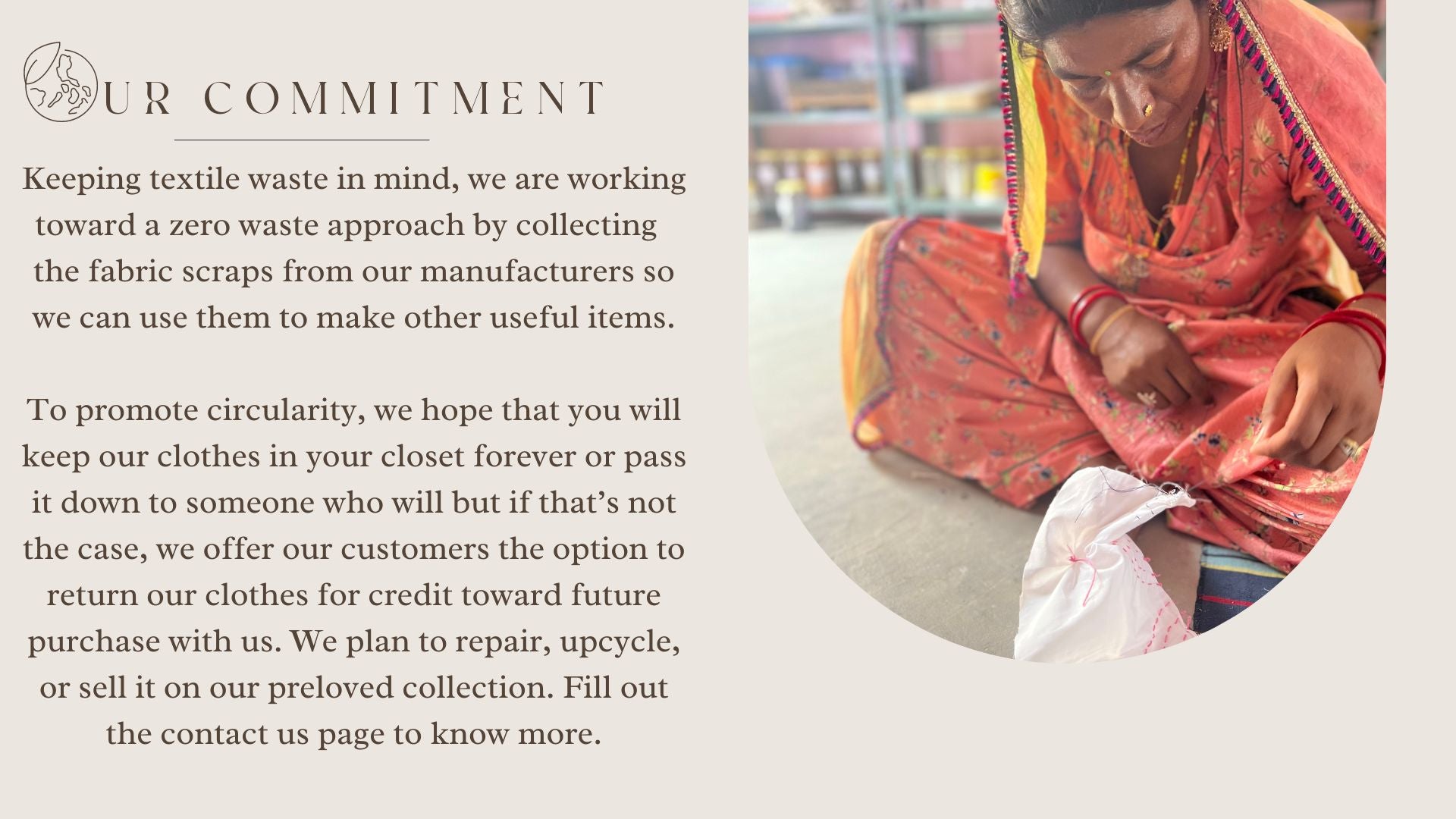Weaving together the people, the culture, & the planet
About Banai
At Banai, every thread tells a story of sustainability, culture, and community. In Urdu, Banai means to weave, a craft deeply embedded in the rich tapestry of Indian heritage. Inspired by this tradition, we are more than just a sustainable fashion brand; we are storytellers, weaving together the threads of people, culture, and planet.
At Banai, we embrace the ethos of slow fashion, cherishing the timeless beauty of craftsmanship and tradition. Each garment is created in small batches, honoring the artisan communities across India. With a profound respect and love for our planet, we prioritize the use of natural fabrics and each garment is made with a start and an end in mind, ensuring our footprint on the planet remains minimal.
Our commitment extends beyond mere production; it's about empowerment and upliftment. Collaborating with artisans and women's social enterprises, we are fostering opportunities for these communities to thrive. Every stitch is a testament to our dedication to ethical practices and social responsibility.
When you choose Banai, you're not just wearing a garment; you're embracing sustainability, culture preservation, and community empowerment. Join us in our journey to weave a brighter, more sustainable future, one thread at a time.
About the Owner
From a young age, Simony, the owner of Banai, was drawn to design, constantly envisioning outfits and experimenting with styles. Growing up in India, she developed a deep appreciation for tailor made clothes and the rich craftsmanship of traditional clothing. Her journey toward sustainability began unconsciously, as she found joy in repurposing scraps of fabric to create outfits for her Barbie doll, scavenging for materials at the local tailor shop.
Fast forward to today, her need and passion for sustainable fashion has only intensified. With Banai, she has embarked on a mission to blend her love for design with a commitment to make a difference.
The Craft







